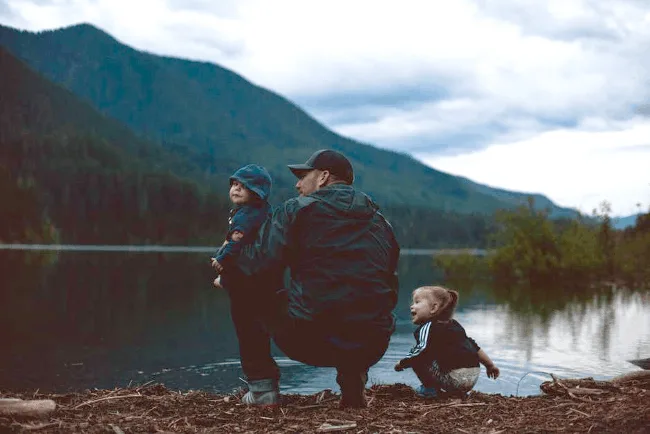
Once your kids are old enough to have mastered their motor skills, you can encourage them to try physical activity more and celebrate the exercise they can do. Hiking is a great way to give children a challenge and allow them to interact with the world around them. Why not take them out on the trails to see how they like being surrounded by nature?
However, before you begin your adventures, you must be prepared and stay safe.
1. Get the Right Gear
You should always opt for the highest-quality gear you can afford. Equipment that is more expensive upfront can potentially save lives. For example, if your child trips and you have to catch them by the strap of their backpack, you want to ensure it will hold up and not rip from the force of you grabbing it.
Ensure you have enough gear for the kids you bring along. They should have one water bottle each, along with some backups that can be stuffed in someone’s backpack. It’s much better to be prepared and not need something than not have packed it. When in doubt, bring it along. If you can carry it, it’s worth going in your bag, especially if you haven’t been on many hikes with your kids and don’t know their limitations yet.
Construction workers typically wear reflective gear so the light bounces off and drivers can see them. Putting reflective clothing on your kids means you’ll be able to see them better in case they go missing or want to play a spontaneous game of hide-and-seek in the woods. It also helps when hiking with older kids closer to dusk.
2. Go Over the Plan
You should always formulate a hiking plan and share it with your kids before setting out. For example, if you’re taking an easier trail, tell them where the path starts and where it ends. Instruct them not to leave the trail and stay out of the unmarked part of the woods. Plan for meetup points in case anyone in your group gets separated.
If your children aren’t familiar with the trail, it might be difficult to help them visualize where they need to go. However, they’ll understand the plans once they’ve gone hiking a few times.
3. Devise a Backup
You need a backup plan in case something goes wrong. You won’t always have cellphone service when hiking, so you must think of another way to communicate. You might decide to make it fun for your kids. Find a lost child by sending bird calls back and forth to one another until you can locate them.
You should also inform a trusted loved one where you’re going and when you’ll be back. If you haven’t contacted them within that window, they know to get authorities involved to look for you and your children.
4. Teach Basic Survival Skills
You should teach children basic first-aid and survival skills according to their ages before you set out. Most millennials don’t know how to last in the wild in a pinch. However, this doesn’t have to be the case with your kids. They need to know certain survival skills if they love being out in nature. When in doubt, avoid things you’re uncertain about. That means teaching them not to eat any berries or interact with wildlife they see during the hike.
Tailor your child’s first-aid training to their age. You might start by teaching them how to clean any injuries on the trail. Older kids can learn how to handle serious issues like the unusual bending and twisting that signifies a bone fracture so they know what to do. Regardless of how much you teach your kids, bring a first-aid kit.
5. Don’t Challenge Them Too Much
You should encourage your children to improve and push their limits, but you must know when enough is enough. Your kids may start complaining and say they want a rest. Don’t get annoyed with them — let them take a break. They don’t have as much stamina as you, so it’s important to pace your group according to their needs.
Similarly, you should start with a simple walk to build up their stamina before going on challenging hikes. Save the most challenging trails for when they’re older and can handle themselves better.
6. Hike During the Day
Hiking at night isn’t a bad idea, but you must ensure you’re safe. However, if your kids are new to trekking through the woods, staying away from night hikes is probably the best course of action. Walking during the day provides better visibility, and you can keep your eyes on your children easier.
If you plan to hike at night, research the area to know what to expect from it. You don’t want to be surprised by some sudden twists and turns you couldn’t see because it was too dark.
7. Know What to Look For
You should know about the local flora and fauna you might encounter on your hike. That way, you can instruct your children to avoid a certain plant, as it might be poisonous or give them a rash. Teaching them about the surrounding wildlife can help quell their curiosity when seeing a forest creature in person.
Many people take their dogs hiking with them, but this can be risky. Dogs can be injured by wildlife while trying to protect their families. Bringing your pet may be stressful, as much fun as an activity with the whole family seems. However, you might be able to add your dog once you know your children can handle a hike. The more experienced your family is, the easier and less stressful it will be for you.
Keep Everyone Safe
Hiking is fun, but it can also be dangerous. You don’t want your kids to get hurt, so you must prepare before setting out. Teaching your children new things will have them wanting to learn more. Before long, they might become hiking experts and want to hit the trail whenever there’s free time.
- Sagittarius Man & Gemini Woman Love and Sex Compatibility - January 31, 2024
- Taurus Ascendant Rising Personality Traits in Men (Guide) - January 31, 2024
- How to Seduce and Attract a Sagittarius Man (Seduction Tips) - January 31, 2024
